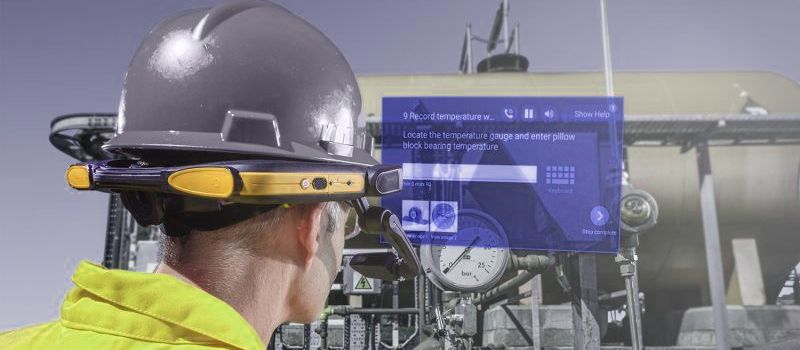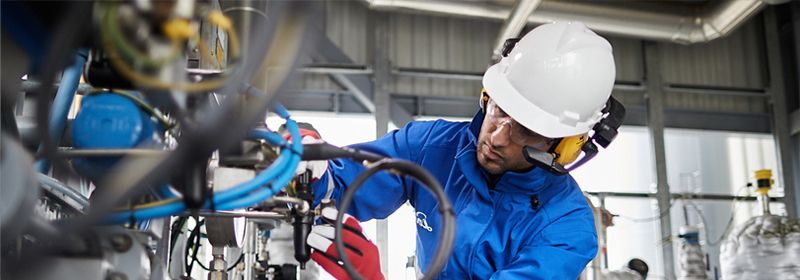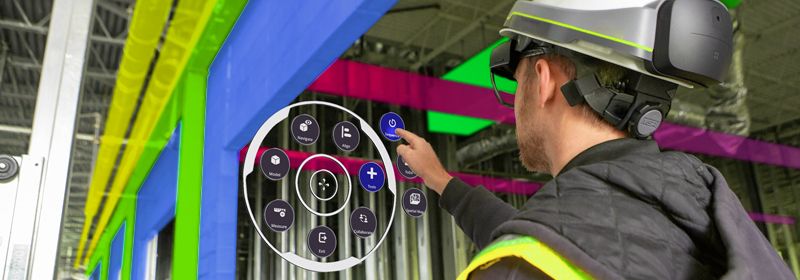
This post is reproduction of the original article published on January 10, 2020 by Lonnie Ludwig on our partner CBT’s website. Reproduced with permission.
Industry 4.0 and Worker Safety
Factories and plants are full of fast-moving machinery, equipment, and vehicles, presenting potential dangers to frontline workers across the globe. This is where Industry 4.0 and Worker Safety come in. While safety and compliance regulations are in place, accidents still happen regularly—oftentimes involving newer, less experienced workers. In fact, the International Labour Organization reports that there were around 313 million on-the-job accidents. Those accidents lead to extended absences from work each year, costing the global economy an estimated $3 trillion.
With high turnover and a skills gap that’s growing larger each year, it’s increasingly important for industrial organizations to prioritize and invest in the health and safety of their workforce. Neglecting to do so can have significant financial consequences. It can also lead to incurring costly medical expenses and potential lawsuits, work-related injuries, or fatalities. This can lead to halting of production schedules, delaying cycle times and preventing manufacturers from being able to meet demand.
Manufacturers are responding with Industry 4.0 technologies like augmented reality and the industrial IoT—creating a labor force of smart, connected workers. These industry leaders are driving productivity and efficiency while increasing safety and compliance across the factory floor. Here are four ways AR and the IoT are making today’s factories safer.
Improved training and onboarding
The pace of competition and the complexity of modern industrial products and manufacturing processes continue to increase—all of which makes training new and existing workers an enormous challenge. Traditional training instructions are not keeping pace with these challenges—if measured by their longer ramp-up times, slower machine fixes and maintenance procedures, and higher safety risks for inexperienced operators, technicians, and assemblers.
AR can accelerate the slow process of onboarding new or seasonal employees by bringing off-site classroom-style training directly into the factory for on-the-job, in-context training. The brain science behind AR has proven that this kind of training is more effective and engaging, and helps workers better retain the critical knowledge needed to maintain their safety in hazardous working environments.
3D work instructions for worker safety
Training scenarios aren’t the only time and place where manufacturers can benefit from AR technology. Traditional work instructions can hamper frontline workers’ ability to be productive due to their difficult-to-interpret nature and ineffective delivery. Operators, technicians, and assemblers need to be aware of safety risks and hazardous conditions when working with certain machinery, but the printed manuals they read instructions from lack the visual context that AR provides.
Augmenting machine changeover, assembly, and process instructions by overlaying them onto physical assets and environments can help workers better understand tasks and how to complete them. Manufacturers can heighten their employees’ awareness of safety risks and hazardous conditions by incorporating visual references and alerts into sets of work instructions. Using hands-free AR headsets, like RealWear’s HMT-1, to view digital instructions can expand field-of-vision and increase mobility during physical tasks.

Accessibility to remote experts
The manufacturing industry is experiencing a global skills shortage. Older, tenured workers are reaching their retirement age and younger generations are not replacing them at a satisfactory rate, leaving industrial companies with fewer resources and expertise. It’s no stretch to assume this loss of skills and experience is contributing in a small part to what the World Economic Forum describes as a lack of wellness at work. Just as work instructions need to be accurate and accessible to be effective, frontline workers often need a knowledgeable go-to person within reach for procedural guidance during unfamiliar tasks.
Shared-view AR experiences make this collaboration between frontline workers and knowledgeable experts as simple as a quick facetime call. Solutions like PTC’s Vuforia Chalk allow workers to dial a remote expert when they’re unsure about how to proceed with potentially dangerous physical tasks. This can help manufacturers reduce scrap and rework, as well as prevent work-related injuries and deaths.
Real-time monitoring
Monitoring the status of machines, lines, and facilities can help manufacturers predict and respond to potential safety issues before they happen. Anomalies within patterns of industrial IoT data can trigger alerts for things like temperature, air quality, or noise levels. This will allow manufacturers to proactively shut down faulty equipment or clear unsafe areas. With this kind of operational information at their fingertips, they can improve compliance with local regulations. Also, they can make the workplace and the environment significantly safer.
For frontline workers who are regularly exposed to hazardous conditions, wearable sensors can improve safety by tracking behavior, health, and environmental threats. Alerting connected workers about when they need to take a break or when their health is at risk can help manufacturers further cut down on the toll that accidents or work-related diseases take on their workforce.

Learn more about Worker Safety
Workplace safety is as important in the factory as anywhere. Frontline workers are constantly at risk, but with today’s technology manufacturers can limit threats and improve safety for their most valuable assets – their people. See how CBT did it at Texmark Chemicals, a Texas toll manufacturer, as part of their Refinery of the Future project.
A Proven Approach
At CBT, we understand the intricacies and risks associated with continuous innovation and digital transformation. That’s why we employ a proven methodology to give our clients the best chance of success, especially when dealing with complicated scenarios like Industrial IoT. Learn more by watching our short video on Innovation Delivery as a Service, or IDAAS.
Schedule a call with us today to learn how the connected worker technology can make your team safer and more productive.
